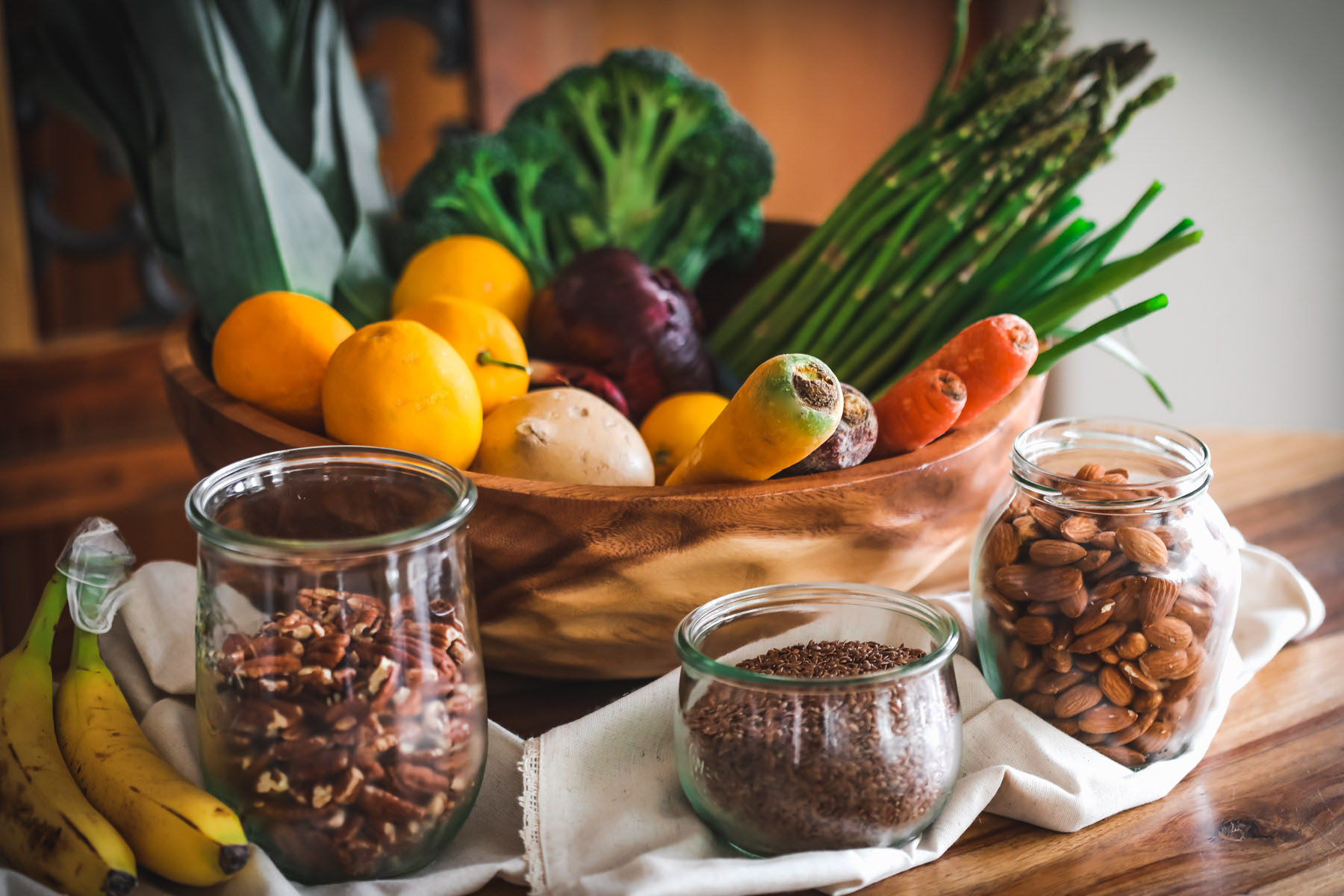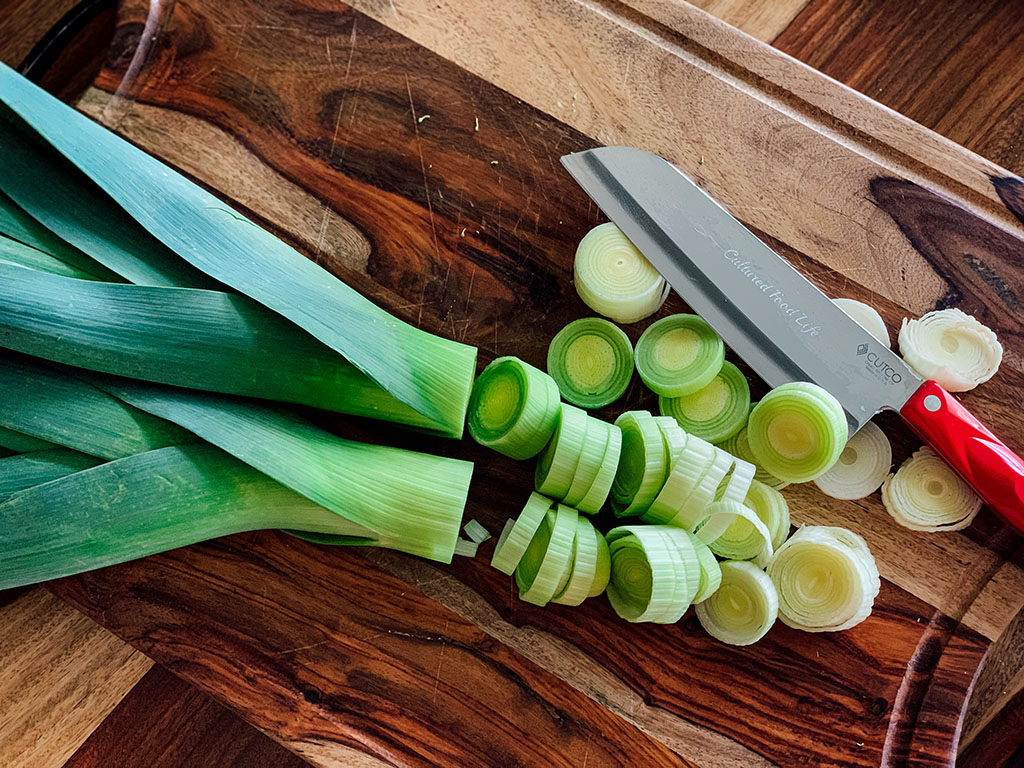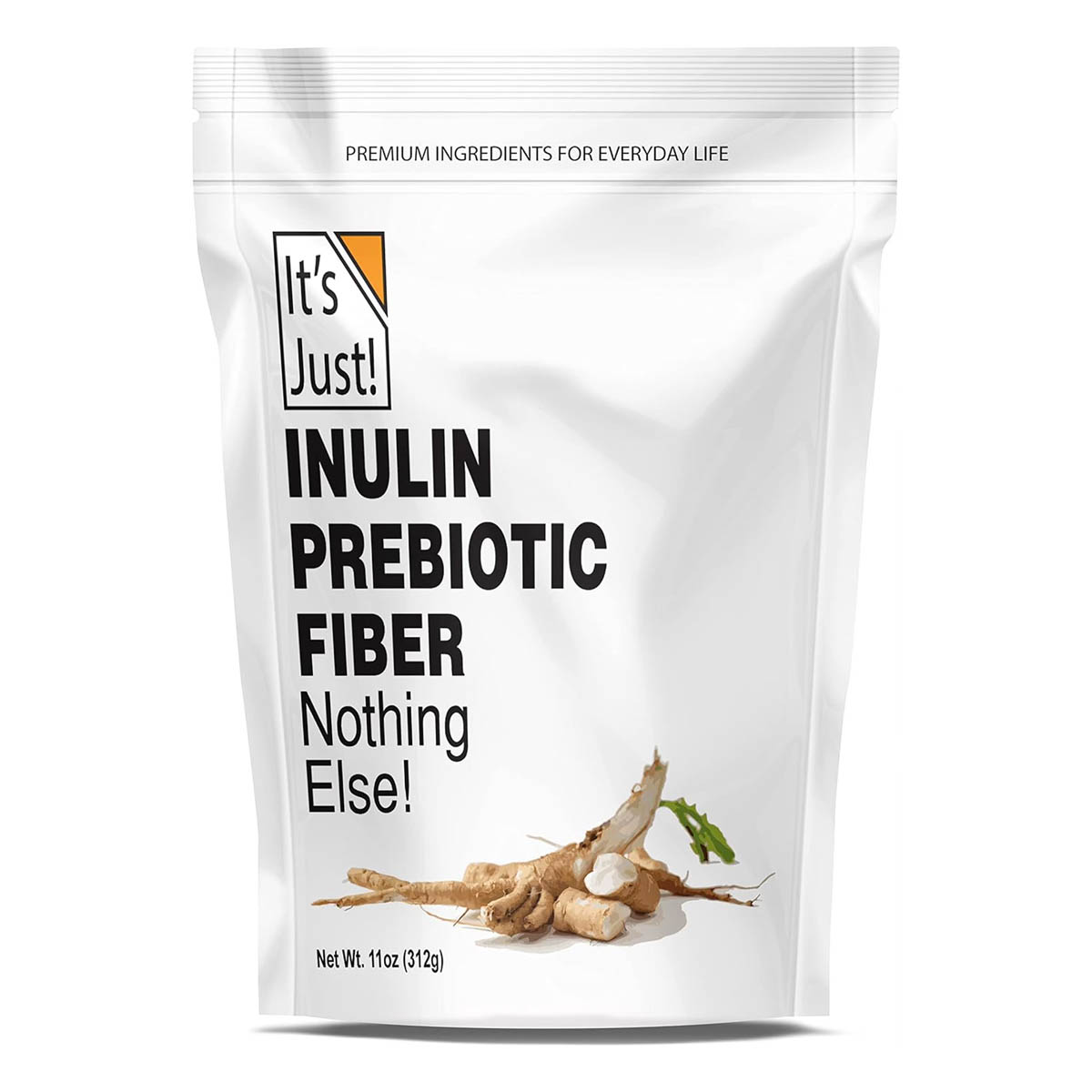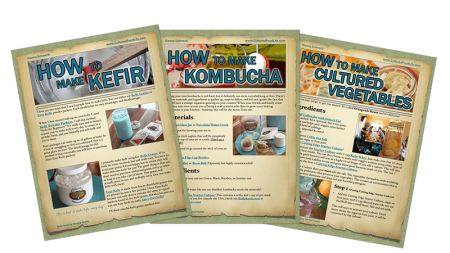
Prebiotics – As Important as Probiotics
Prebiotics
Prebiotics + Probiotics = Probiotic Powerhouse
In the last few years, I have been researching and ingesting a lot of prebiotics; and what I have discovered is that prebiotics are just as important as probiotics. What are prebiotics and why are they so important? Prebiotics are certain indigestible fibers that nourish the good bacteria in the large bowel or colon. The body itself cannot digest these foods, but our bacteria can and we receive the benefits.
Add prebiotics and probiotics with care
One thing I want to note: adding a lot of prebiotics and probiotics should be done with care. They will grow and multiply and can cause stomach distress such as gas and bloating. Your body loves these prebiotic fibers and will ferment them like crazy, changing your gut flora for the better; but often you need time to adjust to the huge changes that are happening inside of you.
They’re Powerful Medicine With Virtually No Calories
 Do you remember when eating fiber became the new craze and they were putting fiber in everything? I never understood all this since the body couldn’t absorb any of the fiber. Yes, it was supposed to keep things moving along throughout the colon to speed elimination, but how was it helping the body’s immune system? What about fruits and vegetables? Everyone knows that we should eat more of them, but why are they so special?
Do you remember when eating fiber became the new craze and they were putting fiber in everything? I never understood all this since the body couldn’t absorb any of the fiber. Yes, it was supposed to keep things moving along throughout the colon to speed elimination, but how was it helping the body’s immune system? What about fruits and vegetables? Everyone knows that we should eat more of them, but why are they so special?
Prebiotics are fiber, but not all fiber is a prebiotic
Although all prebiotics are fiber, not all fiber is a prebiotic. The fiber must be fermented by the intestinal microflora and stimulate the growth and/or activity of intestinal bacteria to be considered a prebiotic. In certain plants, there are fibers which the body cannot digest. Fiber can be separated into insoluble and soluble types. Insoluble fiber promotes the movement of material through your digestive system and increases stool bulk. It does help make elimination easier, but what you really want is more soluble fiber as this is broken down and fermented by colon bacteria. These soluble fibers are digested by our bacteria, which then increases this mighty army of good bacteria inside of us. These fibers are essentially food for our bacteria and are beneficial in even more ways. They can lower cholesterol and blood pressure, decrease insulin resistance, help us lose weight, and they are also very effective in treating people with Irritable Bowel Syndrome as well as many other kinds of gut disorders. These fibers are powerful medicine with virtually no calories; but these fibers strengthen and feed the trillions of microflora inside of us.
There are so many health benefits from dietary fiber. It has been linked to less cardiovascular disease, increased weight loss, and it stimulates metabolic activity. I just have to wonder if the real benefits lie in helping our good bacteria to thrive and grow.
Prebiotics Act As A Fertilizer
These prebiotics act as a fertilizer to promote the growth of the good bacteria in our gut. This is essential to the health and function of our immune system. You want a diverse amount of good bacteria in your gut, and eating cultured foods accomplishes this. With the addition of prebiotics, you have a super strong combination that boosts your immune system. Prebiotics also strengthen your ability to absorb calcium, magnesium, and other minerals usually lacking in our diets

Where Can You Get Prebiotics?

Prebiotic supplements
Eat more fruits and vegetables for the prebiotics, but there are also many prebiotic supplements that work. You can add prebiotic supplements to hot beverages and foods or cook them with other foods, and they will make the bacteria already residing within you thrive.
Here are a few of my favorites:
- Prebio Plus by Cutting Edge Cultures - This special blend is made with three prebiotic fibers: Inulin, Fructo-oligosaccharides, and Acacia.
- Organic Inulin
- Potato Starch: This is a resistant starch that feeds the healthy bacteria inside the colon and produces short-chain fatty acids.
Nothing influences your gut bacteria more than the food you eat? It’s true! And one of the most powerful ways to nourish the good bacteria already living inside you is through prebiotics. Your good bacteria are here to stay—so give them what they need to flourish. 🌱💛
Put it in your cultured veggies!
Weight Loss and Prediabetes
When overweight adults took 21 grams of inulin per day, their hunger hormone levels decreased and their fullness hormone levels increased.[2]
In another 18-week study, forty-four prediabetic individuals consumed either inulin[3] or cellulose (another type of fiber) supplementation. Each one had four visits to a dietitian to obtain a 5% weight loss, which they all achieved by week 9. Those taking inulin lost significantly more weight between 9 and 18 weeks and scored better on liver tests, blood sugar, and lipid profile independent of weight loss. There are many more studies that indicate that inulin can also help with weight loss. Increasing your consumption of these special fibers helps to keep you healthy in so many ways. [4][5][6]

Add Prebiotics To Your Favorite Cultured Foods
You can add Prebio Plus to your kefir or veggies, and it will make a world of difference. You will notice it after the first dose. Your stomach might start to gurgle, and that's the bacteria having a feast. You can put this prebiotic in hot or cold foods, so I add a little bit to my coffee or tea every morning since it's not heat-sensitive.
Make Your Kefir Creamy Again
I also feed it to my kefir grains, and oh my, they love it. They will grow like crazy, and it will also help you make your kefir creamy again if it has separated into whey and curds. Add a small amount of Prebio Plus, shake up the jar, and put it in the refrigerator. The next day, your kefir will be creamy again. Bacteria need food, too, and when you give them what they need, you will feel it in many ways. You'll feel better, lighter, elimination will be easier and more frequent, and flu and colds will be a thing of the past.
I mostly add this to my morning smoothies. It gives just a hint of sweetness. I love how nourished and full it makes me feel. But remember to go slowly, those good microbes will grow like crazy with extra food.
Prebiotics are every bit as powerful as probiotics. It's exciting stuff. I'm still growing and learning, and I love that I was already making recipes with prebiotics without realizing it.
"If you don't like bacteria 🦠 you're on the wrong planet." Stewart Bland
Fresh juices also contain prebiotics
Prebiotics can be found in bananas, berries, kale, chards, onions, garlic, leeks, asparagus, artichokes, jicama, chicory root, dandelion greens, some whole grains, honey, and now some say even milk. Prebiotics can also be put in food products and supplements with names such as inulin, fructo-oligosaccharides, and chicory root.
Fresh juices also contain prebiotics. Most people think that you're missing the fiber in juices since most of the bulk of the vegetable is gone; but fortunately, the soluble fiber remains in the juice making juices loaded with prebiotics.
Here are just a few of my favorite prebiotic foods and supplements.
| Acacia, often called acacia gum, contains 86% prebiotic content. It is used as a food stabilizer and has a substantial amount of fiber, and is essential for strengthening the population of good bacteria in your gut. One place to find this prebiotic is in the supplement Prebio Plus. I often add it to my tea or stir it into salad dressing. It’s wonderful since it can be used hot or cold. |
| Asparagus contains 5% prebiotic content. It diminishes in prebiotics the more it is cooked, so eat it raw or lightly cooked. |
| Bananas contain 1% prebiotic content. Green bananas and plantains contain up to 3% prebiotic fiber, depending on how ripe they are. The greener they are, the more prebiotics they contain. |
| Berries (strawberries, blueberries, blackberries, boysenberries) contain from 1% to 3% prebiotic content. Eating them raw is the best way to ensure you get lots of prebiotics. |
| Carrots, cabbages, and apples contain 1% to 2% prebiotic content. I love carrots and apples and use them daily in my juices and meals. I make tons of kraut with apples and carrots. This way, I get probiotics and prebiotics in one jar. |
| Chicory Root/Inulin has 64.6% prebiotic content. Inulin is made from chicory root and is a powerful prebiotic. The chicory root is roasted to reduce some of its potency, as it can cause stomach problems if not taken with a probiotic. You can find inulin in Prebio Plus and SweetLeaf Stevia (the powder packages only). You can find chicory root in many coffee alternative drinks. |
| Dandelion Greens contain 24.3% prebiotic content. These are delicious as a salad and very enjoyable raw. |
| Raw Garlic contains 17.5% prebiotic content. As it ferments, garlic gets super bubbly and delicious, giving you both prebiotics and probiotics. When you cook garlic, it diminishes the amount of prebiotics, as most of these fibers turn to sugars. |
| HMOs: Human milk oligosaccharides are specific carbohydrates, and essentially a super prebiotic occurring naturally in mother's milk. They help to feed and build the all-important Bifidobacterium. The more Bifidobacteria you have, the more energy you have, the better you age, and the better your immune system works. You'll have less inflammation throughout the body, it primes you for weight loss, and helps decrease food allergies, especially those due to dairy and gluten. |
| Seeds are also prebiotic, with flax seeds containing the most at 13% prebiotic fiber. Flaxseeds have been shown to improve insulin sensitivity and modify the gut microbiota significantly in certain individuals with obesity.1 |
| Fructooligosaccharides, or FOS, contain 35% prebiotic content. FOS is made from fruits and vegetables such as bananas, onions, chicory root, garlic, asparagus, jícama, and leeks. It's a subgroup of inulin. Grains such as wheat and barley also contain FOS. The Jerusalem artichoke and its relative yacon, together with the blue agave plant, have been found to have the highest concentrations of FOS found in cultured plants. You can also find FOS in Prebio Plus. |
| Honey contains 3%-4% prebiotic content. The interesting thing about honey is that it is also antibacterial and a prebiotic. This can confuse people: how does it kill bacteria and also help them grow? The antibacterial qualities protect the honey from harmful microorganisms when it’s in the hive. Honey contains unique oligosaccharides that have an important prebiotic activity that works to increase the ever-important populations of bifidobacteria and lactobacilli in the body. |
| Jerusalem Artichokes are rich in prebiotic fiber with a 31.5% prebiotic content. They can be eaten lightly cooked to obtain the benefits of the super prebiotic fiber. |
| Leeks and Jicama contain 12% prebiotic content. These are some of my favorite veggies. I use leeks and jicama in so many dishes and fermented foods. I love the taste, especially in soups. Check out my Butternut Squash and Leek Soup in my Cultured Food for Health book, and check out jicama in my Flu Prevention Cultured Veggies. |
| Legumes, Rice, Potatoes, and Sweet Potatoes contain 2% to 7% prebiotic content. Legumes and potatoes also contain resistant starch, which is another type of prebiotic fiber. Resistant starch does just what it says, it resists being digested in the small intestine until it enters the large intestine, where bacteria ferment it. It stimulates the growth of good bacteria in the large intestine and boosts the production of short-chain fatty acids like butyrate. Butyrate has powerful anti-inflammatory effects that go beyond the gut. You want more butyrate in your system, as it is a powerful aid in preventing cancers, promoting weight loss, and boosting the immune system. |
| Raw Onions contain 8.6% prebiotic content. Cooked onions still contain 5%, but like garlic, much of the fiber turns to sugar. Raw is better! |
| Nuts contain 1% to 6% prebiotic content. Even roasted nuts can contain prebiotic fibers. |
| Whole Grains, Oats, Amaranth, Quinoa, Millet, and Buckwheat all contain 2% to 5% prebiotic content. It’s most important to eat sprouted or soaked grains or to consume bread made with sourdough starters. These preparation methods help to unlock the nutrients by deactivating the phytic acid in grains that can wreak havoc on your gut and keep you from getting the vitamins and minerals. Oats have a lot of soluble fiber, and so do amaranth, quinoa, millet, and buckwheat. These are especially helpful if you have problems with wheat. |
| Prebio Plus contains tons of prebiotics - up to 86% prebiotic fiber content. Prebio Plus has three different prebiotics: inulin, acacia, and FOS. Inulin and FOS have about 41% fiber content, while acacia has 86%. You can use this in all kinds of cultured foods. You can also add it to regular dishes by adding it to your coffee or tea, or sprinkling it on salads and dressings. It's pretty powerful and a little goes a long way, so start out small when first using it. Combined with probiotic foods, you will feed the microbiome in your gut and allow it to grow and multiply. As with all prebiotics, you want to allow your body to adjust, and you want to avoid any undue gas as these fibers ferment and grow and change your inner ecosystem. |
There are many more prebiotics - these are just some of the more important ones. Concentrate on feeding your microbes lots of healthy probiotic foods and prebiotic fibers in fruits, veggies, nuts, seeds, and grains, and watch as your microbes take care of you from the inside out
Listen To My Podcast
What is a prebiotic and why is this so important? Prebiotics are certain indigestible fibers that nourish the good bacteria in the large bowel or colon. The body itself cannot digest these foods, but our bacteria can, and we receive huge benefits. Learn more about how to get these special prebiotics into your diet and find the ones that are best for you.
References:
- Brahe LK, et al. Dietary modulation of the gut microbiota - a randomized controlled trial in obese postmenopausal women. Br J Nutr. 2015 Jul 2:1-12. [Epub ahead of print]
- https://www.ncbi.nlm.nih.gov/pubmed/19386741
- https://www.ncbi.nlm.nih.gov/pmc/articles/PMC4619305/
- https://www.ncbi.nlm.nih.gov/pubmed/22952656
- https://www.ncbi.nlm.nih.gov/pubmed/25500202
- https://www.ncbi.nlm.nih.gov/pubmed/26500686
Are you on the list?
Sign up today and I'll send you my free Getting Started Guide!
Each week I'll send you updates, tips, recipes, and more! You might even be a winner of my weekly giveaway! (starter cultures, memberships, and more!)
Come be a part of my cultured food family!


